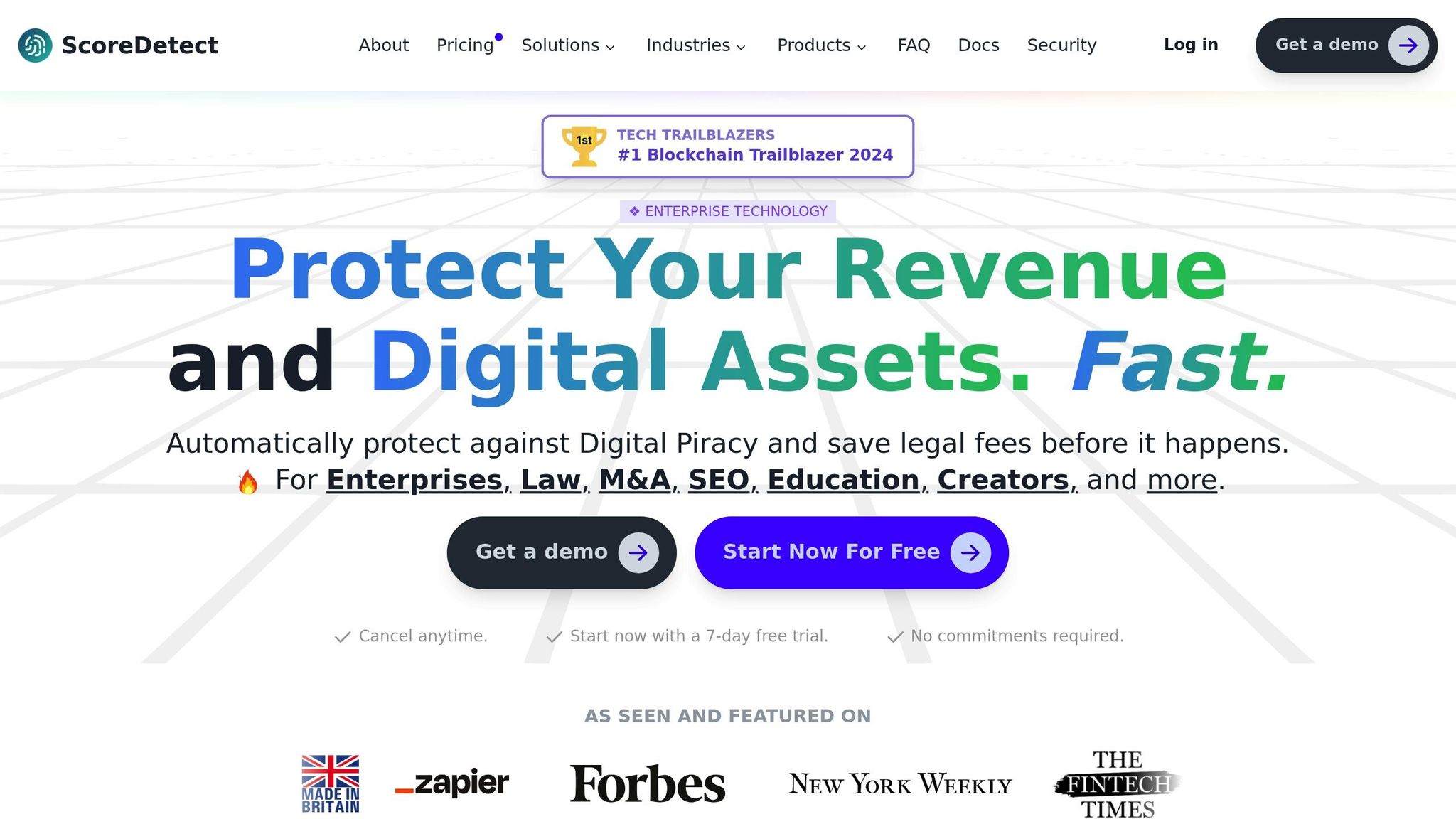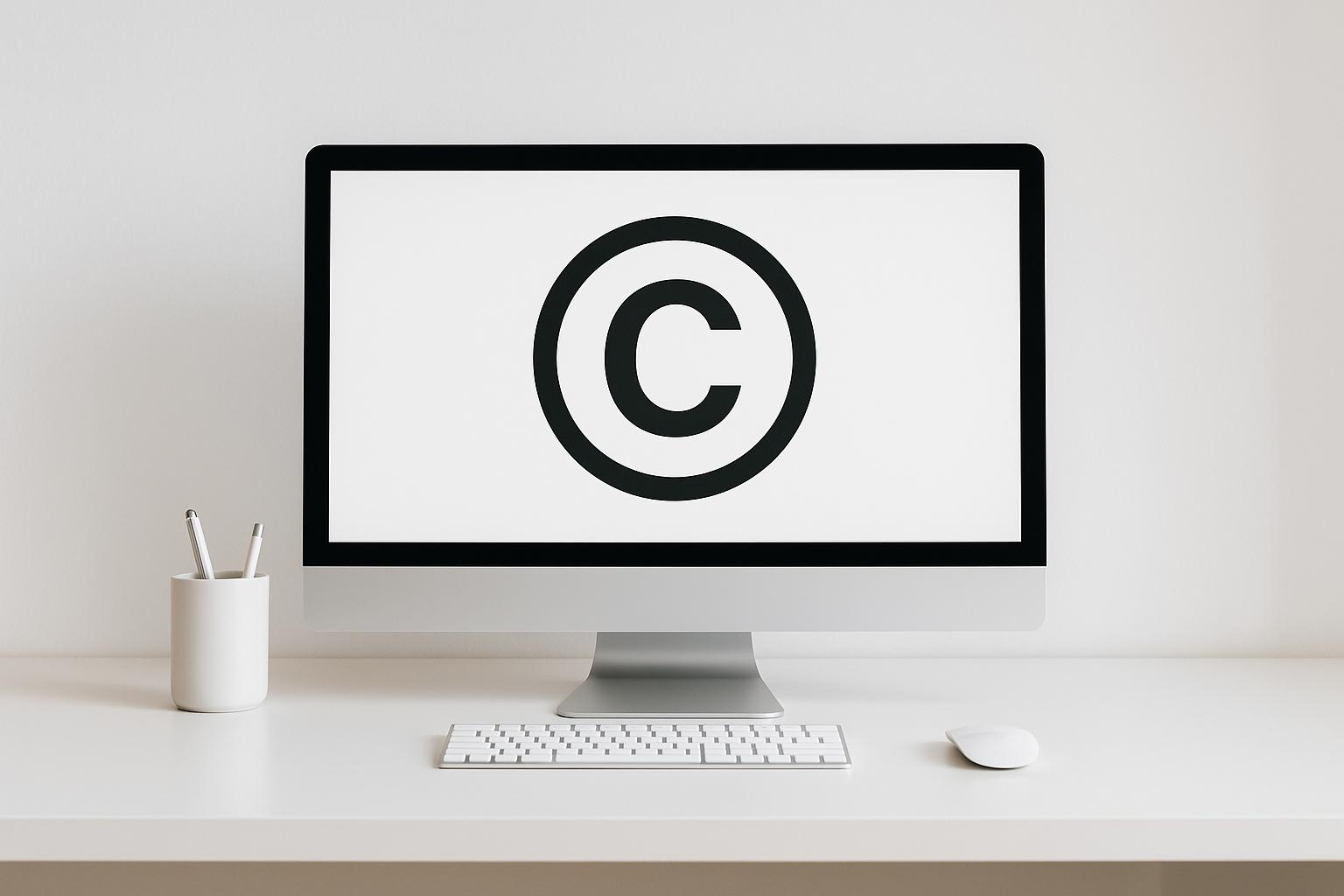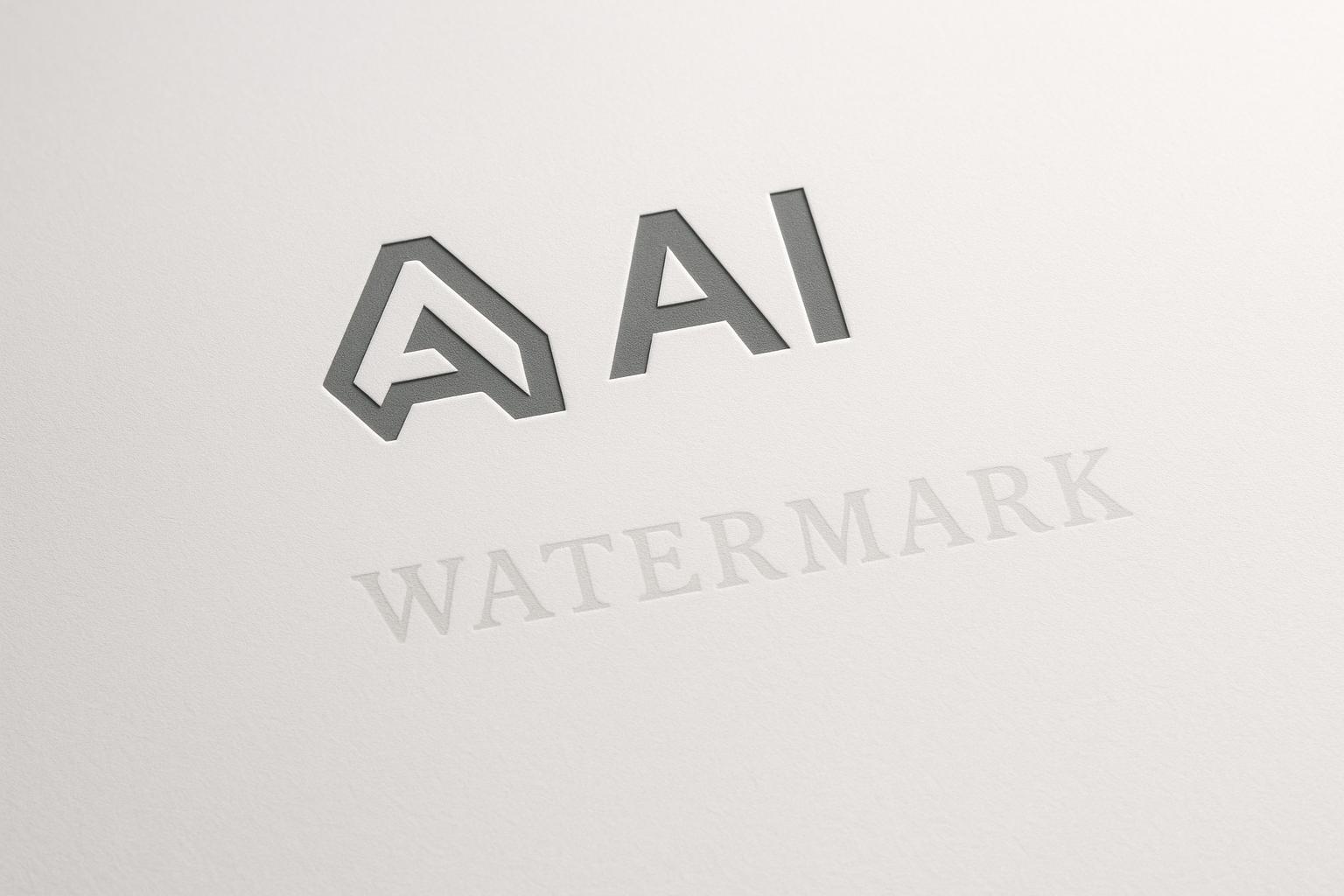User-generated content (UGC) can boost engagement and trust, but it comes with legal risks that businesses must address. Here’s what you need to know:
- Copyright Violations: Sharing copyrighted material without permission can lead to lawsuits. Use tools like blockchain verification to track ownership.
- Liability Issues: Hosting harmful, defamatory, or fraudulent content puts businesses at risk. Implement strict content review processes and user guidelines.
- Privacy Concerns: Misusing personal data can lead to legal trouble. Always get explicit consent and secure user information.
How to Reduce Risks:
- Set up clear user agreements and permissions.
- Use automated and manual content review systems.
- Keep detailed records of content ownership and moderation actions.
- Leverage tools like ScoreDetect for content verification and protection.
Managing UGC effectively safeguards your brand, builds trust, and ensures compliance with legal standards.
Supreme Court hears case about Big Tech liability
Main Legal Risks in UGC Management
Managing user-generated content (UGC) comes with legal challenges that require careful attention and strong safeguards.
Let’s break down the key legal risks tied to UGC and how to handle them.
Copyright Issues
One of the most common risks involves copyright violations. This includes using protected content like professional photos, music, videos, articles, or artwork without proper authorization.
Tracking digital ownership can be tricky, but tools like ScoreDetect’s blockchain verification system help ensure content is used appropriately and ownership is clear [1].
Content Liability
Businesses can face legal trouble for hosting content that is defamatory, fraudulent, harmful, or violates regulations. Even content that damages reputations can lead to liability.
Operators of platforms must act quickly when alerted to problematic content. Establishing thorough content review systems can help identify and address harmful material before it escalates. Additionally, safeguarding user privacy is a critical part of managing liability.
Privacy Rights
Protecting users’ personal information is non-negotiable. This includes data like identification numbers, locations, contact details, financial records, and medical information. To address privacy concerns, businesses should:
- Secure explicit consent before collecting, sharing, or storing personal data.
- Implement clear permission and data removal processes.
- Establish strong policies for data retention and protection.
For extra security, systems like ScoreDetect’s blockchain technology can help maintain accurate ownership records while protecting sensitive digital assets [1].
| Legal Risk Category | Key Concerns | Solutions |
|---|---|---|
| Copyright | Unauthorized use, ownership disputes | Verification tools, timestamping |
| Liability | Defamation, harmful content, non-compliance | Content reviews, user guidelines |
| Privacy | Personal data misuse, consent issues | Privacy policies, secure data protocols |
Methods to Reduce UGC Legal Risk
Taking the right steps can help minimize legal risks while keeping your community active and engaged.
Content Permission Systems
Having clear permission protocols ensures proper usage rights for user-generated content (UGC). These protocols typically include:
- User Agreements: Clearly defined terms that explain content ownership and usage rights.
- Rights Documentation: Systems to track user consent and licensing details.
- Opt-out Mechanisms: Simple ways for users to withdraw their permissions.
- Usage Tracking: Tools to monitor how and where content is being used.
It’s important to keep detailed records of all agreements and regularly evaluate their effectiveness.
Content Review Process
A solid content review system helps catch potential legal issues before they escalate. Here are some key components:
| Review Component | Purpose | Implementation |
|---|---|---|
| Pre-publication Screening | Prevent prohibited content | Use automated filters and human reviewers |
| Regular Audits | Identify emerging problems | Schedule periodic content assessments |
| User Reporting | Enable community oversight | Provide an easy flagging system |
| Response Protocols | Resolve issues quickly | Set up clear escalation procedures |
Training your team on content guidelines and legal standards ensures consistent and reliable reviews.
Protection with ScoreDetect

In addition to internal measures, advanced tools like ScoreDetect can provide an extra layer of protection for UGC. This platform uses blockchain technology and automated monitoring to safeguard content.
"ScoreDetect is exactly what you need to protect your intellectual property in this age of hyper-digitization. Truly an innovative product, I highly recommend it!" – Imri, Startup SaaS, CEO [1]
Here’s what ScoreDetect offers:
- Rapid Verification: Generates content certificates in just 3.465 seconds [1].
- Blockchain Security: Uses secure checksums for strong copyright protection.
- Automated Workflows: Integrates with over 7,000 web apps for seamless content management [1].
- Multi-format Support: Protects text, images, audio, and video files.
The platform’s verification system creates clear ownership trails and timestamps, making it easier to address cases of unauthorized use.
sbb-itb-738ac1e
UGC Legal Compliance Guide
To minimize risks, establish a solid compliance framework for user-generated content (UGC).
User Guidelines
Develop clear user guidelines to safeguard both your platform and its users. These should cover:
Content Ownership Rights
- Clear statements about who owns the content
- Licensing and usage terms that are easy to understand
- Proper attribution to the original creators
- Restrictions on using copyrighted material
Content Standards
- Define prohibited content, such as hate speech or explicit material
Verification Requirements
- Set up strong processes to verify content authenticity
"As a SaaS company owner, I find ScoreDetect to be a highly valuable tool for ensuring the integrity of our digital content." – Joshua Chung, CEO of Startup Consultancy [1]
Platform Rules
Once user guidelines are in place, create platform-specific rules to consistently enforce these standards.
| Rule Category | Key Components | Implementation |
|---|---|---|
| Content Moderation | Pre-publication review, AI filtering, human oversight | Combine automated filters with human review |
| Rights Management | Permission tracking, usage monitoring, ownership verification | Use digital certificates and blockchain records |
| Reporting System | User flagging, clear violation categories, response protocols | Build a reporting system with timely responses |
| Enforcement Actions | Warning system, content removal, account suspension | Define clear consequences for violations |
"With ScoreDetect, I can take pictures for my travel blog and be confident that nobody will claim them as theirs. I can always prove that I am the author." – Kyrylo Silin, SaaS Founder, CEO [1]
Legal Records
Keeping detailed records of permissions and moderation actions strengthens the legal foundation of your platform.
Permission Documentation
- User agreements and consents
- Records of content licensing
- Documentation for rights transfers
- Logs of usage permissions
Moderation Records
- Decisions made during content reviews
- Records of violations and enforcement actions
- Resolutions of user appeals
Verification Certificates
Maintain digital records to verify content details, including:
- Content checksums
- Blockchain transaction links
- Timestamps
- Proof of ownership
Automate the creation and secure storage of these records. Regular audits will ensure your documentation stays up-to-date and is accessible when needed.
Conclusion: Managing UGC Legal Risks
Key Takeaways
Effectively managing legal risks tied to user-generated content (UGC) involves a mix of technology, clear policies, and efficient processes. Protecting digital content is a priority for businesses relying on UGC. For instance, ScoreDetect’s SEO calculator reveals that proper content timestamping can boost monthly value by $1,000.00, offering an impressive ROI of 8,233.33% [1]. These findings highlight the strategic advantages of proactive risk management.
Advantages of Risk Management
Implementing strong UGC risk management practices can lead to multiple benefits:
| Category | Impact | Outcome |
|---|---|---|
| Legal Protection | Better copyright security | Fewer intellectual property disputes |
| Trust Building | Greater audience confidence | Higher engagement and better content |
| Operational Efficiency | Automated verification processes | Faster approvals, less manual work |
| Brand Protection | Proactive content oversight | Stops unauthorized content use |
ScoreDetect’s tools demonstrate these advantages clearly. Their automated delisting notices achieve a 96% takedown success rate, while their web scraping technology identifies unauthorized content with 95% accuracy [1].
To get the most out of these strategies:
- Use blockchain-based systems to verify content ownership.
- Automate content monitoring to save time and reduce errors.
- Keep detailed digital records to prove ownership.
- Set up clear protocols for resolving content disputes.
"With ScoreDetect, I can take pictures for my travel blog and be confident that nobody will claim them as theirs. I can always prove that I am the author." – Kyrylo Silin, SaaS Founder, CEO [1]
FAQs
What steps can businesses take to enjoy the benefits of user-generated content while minimizing legal risks?
To safely leverage user-generated content, businesses should implement proactive measures to mitigate legal risks like copyright infringement and defamation. Tools such as ScoreDetect can provide robust protection by offering verification certificates, which serve as proof of ownership and enhance copyright security.
ScoreDetect also supports a variety of content types – such as images, videos, social media posts, and e-books – making it easier for businesses to safeguard their digital assets. By combining advanced AI technology with features like invisible watermarking and automated takedown notices, businesses can maintain control over their content while mitigating potential legal challenges.
What steps can I take to comply with privacy laws when managing user-generated content?
To ensure compliance with privacy laws when handling user-generated content, start by obtaining clear consent from users before collecting, sharing, or publishing their content. Make sure your platform has a transparent privacy policy that explains how user data and content will be used.
Additionally, implement content moderation practices to identify and address potential violations, such as sharing private information without consent. Regularly review and update your policies to align with changing legal requirements, such as the California Consumer Privacy Act (CCPA) or General Data Protection Regulation (GDPR) if applicable.
For enhanced protection, consider using tools like ScoreDetect to monitor and safeguard your digital assets effectively, ensuring compliance and reducing risks of unauthorized use or privacy breaches.
How does blockchain technology help protect content ownership and prevent copyright infringement?
Blockchain technology helps protect content ownership and prevent copyright infringement by creating a tamper-proof record of your digital assets. It generates a unique checksum for your content, which acts as a digital fingerprint, ensuring its authenticity and timestamp. This proof of ownership can be verified without storing the actual content, preserving privacy while enhancing copyright protection.
Tools like ScoreDetect utilize blockchain to provide certificates that include the checksum, transaction details, and verification methods. These certificates serve as reliable evidence of ownership and integrity, making it easier to address copyright disputes and unauthorized usage.

